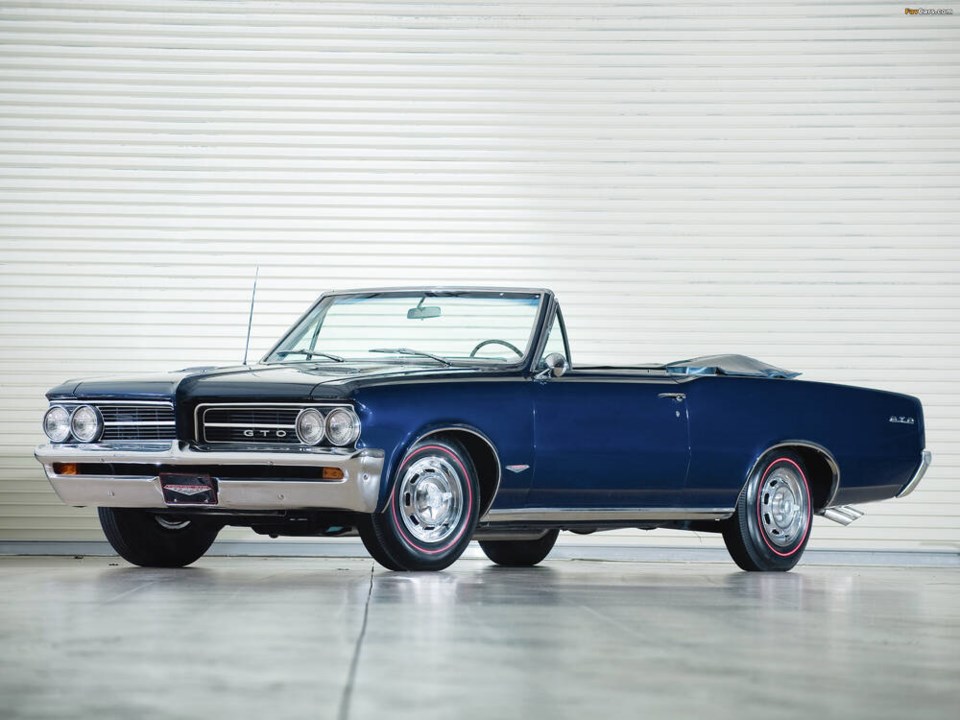Although a few high-wheeled Pontiacs were manufactured early in the twentieth century by Pontiac Spring and Wagon Works of Pontiac, Michigan, our subject is a different vehicle that became part of the General Motors family. Built by GM for more than 80 years, it was one of the hierarchy of cars that made GM the world’s mightiest corporation. Pontiac’s association dated from 1926 but its history began with Oakland Motor Car Co. in Pontiac, Michigan in 1907.
Flint, Michigan, carriage entrepreneur Billy Durant founded General Motors in 1908 and acquired Oakland Motor Co. in 1909. Oaklands initially had two cylinders but soon advanced to four. When Alfred P. Sloan, Jr. assumed GM’s presidency in 1923 and reviewed its stable of cars, Oakland was slotted between Chevrolet and Buick, with average sales.
In 1926, Oakland introduced the newly created Pontiac as a “companion car” aimed at boosting sales by offering a little more than a Chevrolet at a slightly higher price. Based on the Chevrolet chassis but unlike the Chev’s four, its sturdy new short-stroke, side-valve six produced 40 horsepower at only 2,400 rpm.
With this slow speed durable engine, Pontiac sold an industry leading 76,000 cars in its first year. They were all closed models reflecting the switch to closed cars that had occurred in 1925. Unusually, the newcomer outsold its Oakland parent.
Oakland and Pontiac continued but as Pontiac sales soared Oakland’s future dimmed. Production ended in 1931 and Pontiac became the only companion car to replace its parent. Using many Chevrolet parts made Pontiac the lowest priced six on the market and inaugurated a component mix-and-match policy GM would continue to follow.
Pontiac flourished during the 1930s by offering solid if unspectacular cars. It got such GM advances as “Turret Top” all-steel body construction, Dubonnet “Knee Action” independent front suspension and four-wheel hydraulic brakes. Its distinctive “Silver Streak” hood and deck stripes appeared in 1935.
A sound reputation for good value secured Pontiac’s GM niche and by 1941, before the Second World War’s hiatus in American car production, Pontiac’s almost 300,000 annual sales stood fifth in the industry
After the war Pontiac returned with face lifted ’42s until new models became available. Reliable inline six and straight-eight side-valve engines, automatic transmissions and appealing styling kept sales brisk, often to older buyers.
Pontiac got its post-war styling in 1949 and overhead valve V-8 in 1955, finally retiring the old inline eight. New general manager Semon “Bunkie” Knudsen arrived in 1956 and vowed to turn Pontiac into a young man’s car. The silver streaks came off the 1957 models and Knudsen’s arrival, along with chief engineer Elliot M. “Pete” Estes and enthusiastic young engineer John DeLorean began Pontiac’s transformation into a hot, youth-oriented brand.
Pontiac cleaned up at Daytona Beach’s 1957 Speed Week and was soon winning NASCAR races with Pontiac “Super Duty” (read racing) engines, ace mechanic Smokey Yunick tuning them, and drivers like Glen “Fireball” Roberts driving. For 1959 its new “Wide Track” cars (except in Canada) were promoted with a very successful advertising campaign.
The Big Three (GM, Ford and Chrysler) brought out compact cars for 1960. Pontiac’s version, the unit construction Tempest, came in 1961 with a novel curved “rope drive” driveshaft, four-wheel independent suspension and rear transaxle. This was abandoned in 1963 and Tempest continued with conventional drive. It offered one more unusual feature for America in 1966, a belt-driven overhead camshaft six.
DeLorean, now Pontiac’s chief engineer, and advertising account executive Jim Wangers conceived the GTO version. To circumvent GM’s corporate ban on intermediate car engines larger than 330 cu in. (5.4 litres) Pontiac made the GTO an option on the 1964 Tempest that included the big Pontiac’s 6.4 litre (389 cu in.) V-8. It launched the widely imitated Muscle Car segment.
Another benchmark was the 1963 Pontiac Grand Prix, a sporty “personal luxury” version of larger Pontiacs with features like bucket seats.
Ford created what became known as the Pony Car market in 1964 with its Ford Mustang. Pontiac answered in with its Firebird, a clone of the 1967 Chevrolet Camaro. The Firebird and spin-off Trans Am became very successful Pony Cars.
GM downsized its full size cars, including Pontiac, for 1977, and its 1980 compact Phoenix “X-car” was part of GM’s transition to popular market front-wheel drive. Pontiac also made imaginative use of Phoenix components to create the mid-engine Fiero in 1984, a two seater with a novel fibreglass-panelled body. This was followed by another two-seater, the Solstice in 1996.
Pontiac’s sporty small cars, the return of the Firebird/Trans Am after a hiatus, and being designated as GM’s performance car division wasn’t enough to save Pontiac. The 2008 Great Recession forced GM to rationalize its overlapping nameplates and it discontinued the Pontiac brand with the 2010 model year.



